Year in Review 2022-2023
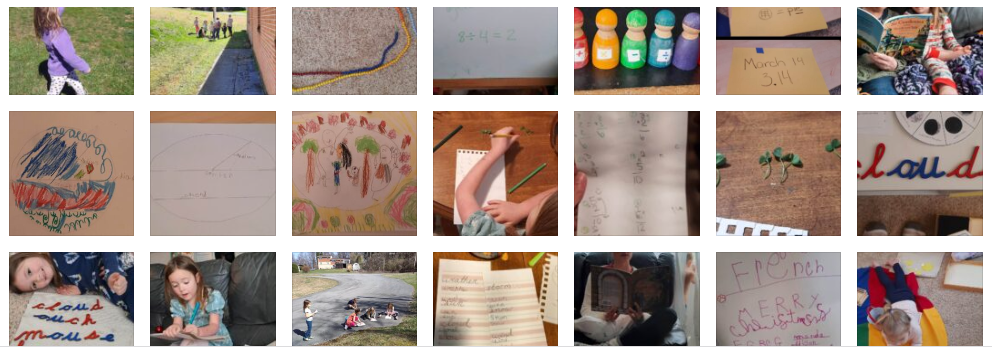
For our Year in Review this year, I am taking a slightly different approach. I have done a seasonal recap throughout the year of the Summer, Fall, Winter, and Spring in our homeschool. Instead of rehashing all of that here again, I am going to do a little narrative of each subject. I hope to summarize a bit of what was studied and give a clear picture of the progress that was made. I have two in the 3-6 homeschool classroom at the close of the 2022/2023 school year. One who is in her first year (K3) and one who has just completed her 3rd year (K5 year). Where applicable, both daughter’s will have their own paragraph.
Practical Life
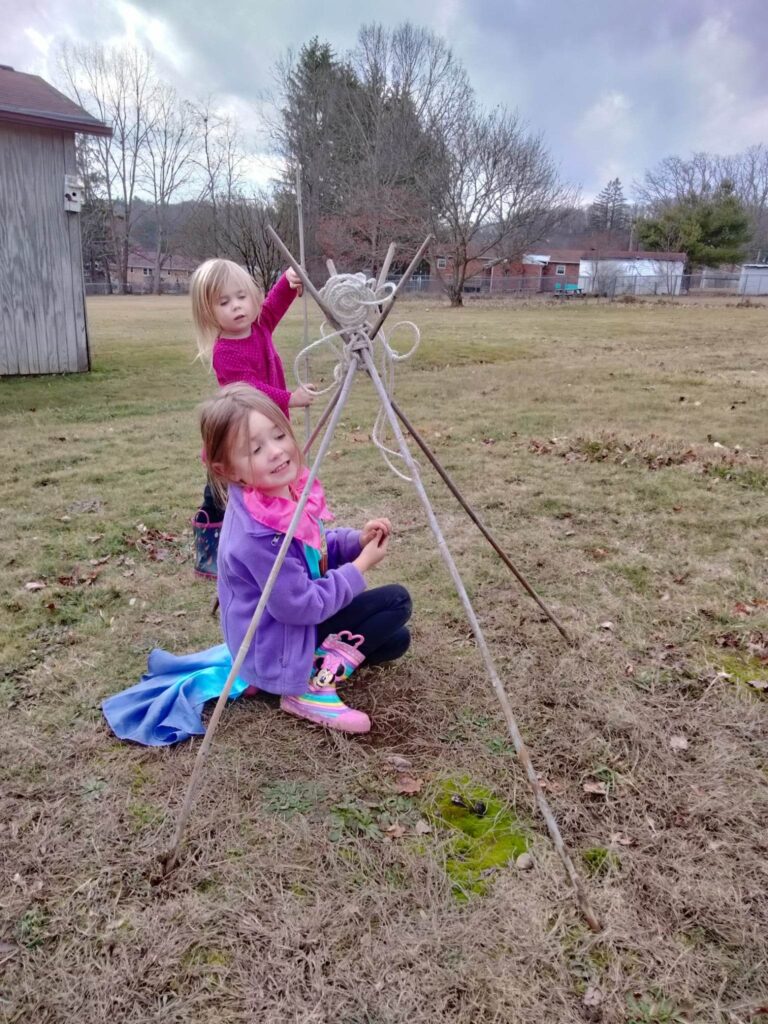
This is an incredibly important part of the curriculum in the first plane of development. It aids the child in developing and refining their control of movement, honing their focus, gaining independence, and adapting to life in general. Each time I do a yearly recap I go on and on about the importance of practical life and I have even written about it in detail. I wont go into any more detail this time around. It’s important. I will leave it at that. Each of my daughter’s have had space to grow in this area. You can check out more of what they have been up to in this area in the seasonal recaps I did this year linked at the beginning and end of this post.
Sensorial
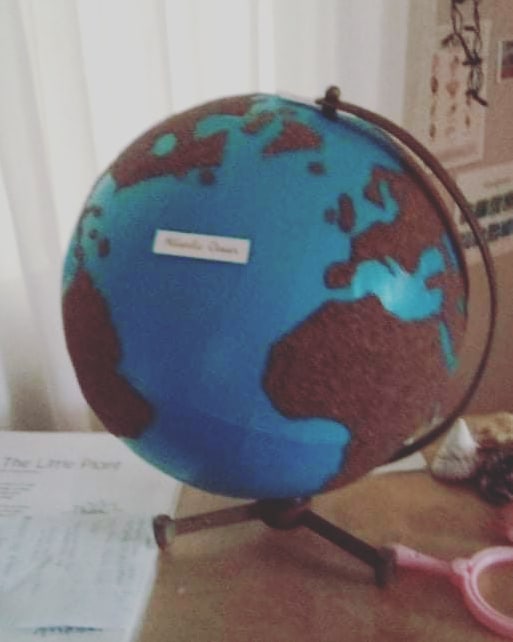
This year was the start of the sensorial sequence for one daughter and the end for my oldest. It serves to engage all of the senses and indirectly prepares the child for math, science, reading, and writing (as does practical life!). It prepares the body and mind to begin to engage intentionally with the world in which we live. To further develop the little scientists the child is designed to be. It even begins the early geometric work of the Montessori classroom.
Little Miss 3 has fallen in love with the knobbed cylinders. Even more so than her sister and has been eager to receive her own presentations. She is proud to have her own work and loves to hone her skill. She had the initial presentation for all 4 of the knobbed cylinders, the pink tower, the color tablets, and the circles from the geometric shapes.
Miss 5 (now 6!) completed her sensorial work towards the start of the year. We will still reference the geometric cabinet and may even add the leaf cabinet (we did all the shapes with a lovely book we found but are hoping to add this to our homeschool). I believe we will use both the binomial and trinomial cubes again as well. All of this will be under other areas of study for her though and will come from a second plane presentation sequence as opposed to a primary one after this. Sensorial has served her well and she is now ready to move into the elementary exploration of these things.
Penmanship
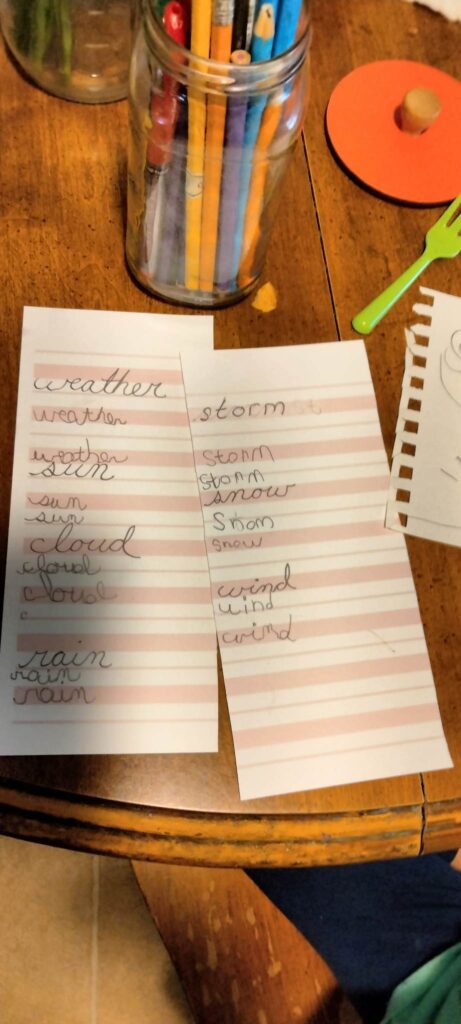
This journey really took off for my oldest in year two of her Montessori Homeschool. All of the pre-writing activities in practical life and sensorial do SO much to prepare the hand and mind to write. The early writing sequence starts with the sandpaper letters. Then the physical writing starts with the metal insets. But writing letters and words on paper? Physically? That is not until number 10 on our early writing sequence outline. For my oldest it fell in her second year of Montessori (K4 year). In her K5 year (or year 3 of Montessori 3-6), she began to refine her handwriting a bit. This was a mix of tracing, copying, transcribing, and free writing. She has very pretty cursive when she takes her time and is able to print (although she often mixes the two when she does so – and I love it!). We have chosen to introduce cursive before print in our homeschool and will continue to refine both over time.
Early Writing Sequence in a Montessori Home
Writing
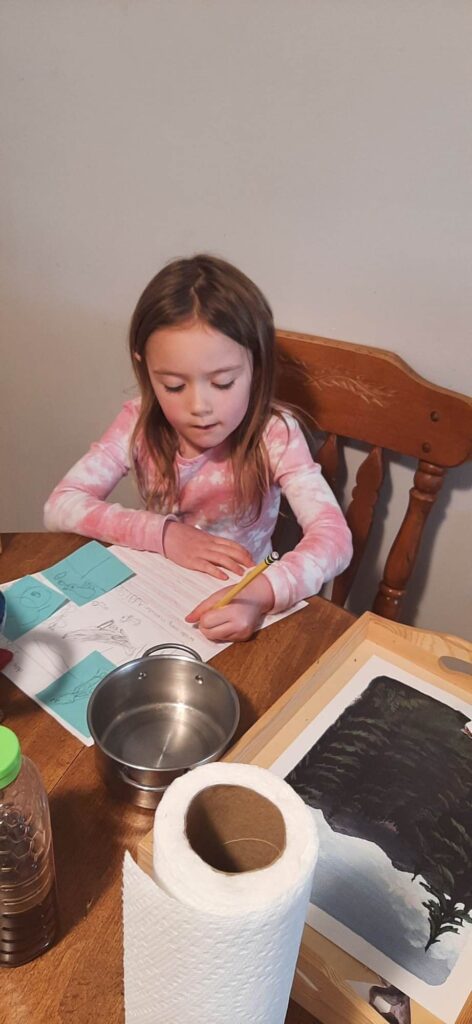
How would I describe writing in our home? Creating with words. Nature journaling, daily journal entries, penning our emotions, creating stories, writing poems, creating our own language. These are the things that filled the pages of our homeschool. Oftentimes my daughter chose to put pen to paper herself. Sometimes my husband or myself would act as her scribe. She orally wrote two papers this year. One on saving the Monarch butterflies and the other on the story of Deborah.
Reading
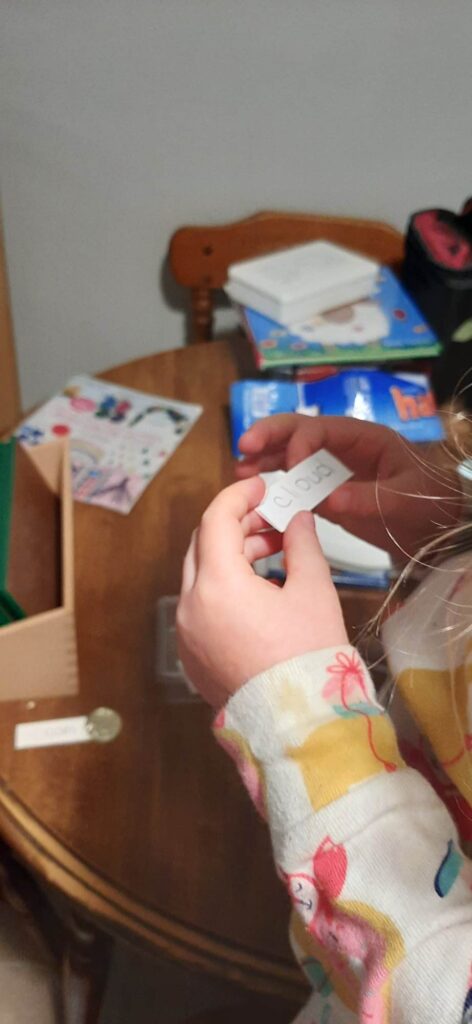
When we started the summer term, Little Miss 5 (now 6!) was pre-reading but already creating with words with a mix of the moveable alphabet and copy/spelling words. At the end of the summer she had just taken her first step in beginning to read back what she wrote with the moveable alphabet. She spent the fall honing the skill of sounding out the words in front of her, blending them together, and pushing through multi-syllabic words, blending consonants, and working mostly with short vowels (although some long vowels popped up here and there!). She continued to practice over the winter as she worked her way through words and sentences using the digraph sounds represented in the double sandpaper letters. At the close of winter, she was ready for puzzle words. These are words that are decodable once a spelling rule is learned. For example, o = u in the word from. We worked through the first set of puzzle words and a few spelling rules that organically came up in our studies. We’ve spent the last eight weeks really leaning into reading practice (if you will). She worked through the first set of puzzle words and started the “little books” we curated for our home. I still hope to add more to these readers over the next few months and set up a little space for her to have access to more. I cannot wait to see where her reading journey takes her.
Early Reading Sequence in a Montessori Home
Sound Games
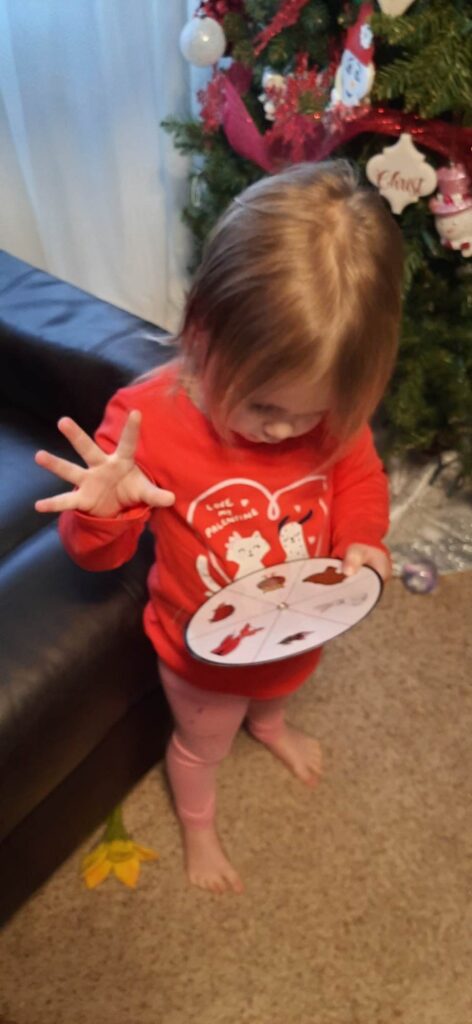
This pre-reading (and honestly post-reading) phonemic awareness activity is SO fun and incredibly important in preparing the child to read and creating fluency once the child is reading. I go into more detail on how to play sound games here. My middle child is currently in the beginning phases of beginning sounds whereas my oldest has mastered sound games and just circles back as she is interested or needs review (as she did this spring).
Math
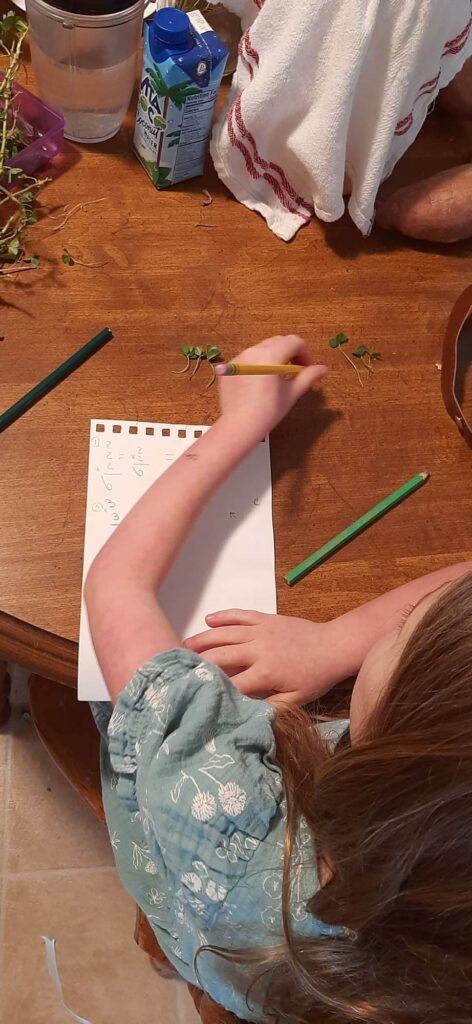
In our home we do not formally introduce math before a good bit of sensorial work therefore our oldest is the only one with math work at this time. I have not talked about this much yet but the Montessori scope and sequence is spiraling. So you work in 3-6 year segments that spiral back to concepts. Some concepts are touched yearly while others are touched once in the 3 year spiral. In Montessori Math, the decimal system, four operations, and linear/skip counting are all parallel works that would be available to work through throughout the year. The guide moves through the sequence based on observation and interest (deep dives in certain areas and following the child’s interests allows you to move through materials as they are ready for lessons).
She has done the following:
All four operations, Place Value, Linear Counting 1-100 and 1-1,000, skip counting by 10’s, 100’s, and 5’s, addition math facts, exchanging with addition, adding and subtracting 4 digit numbers, multiplying 1 and 2 digit numbers, dividing 3 digit or smaller. Coins Unit, Clock Unit (beginning – hour and minute); sensorial fractions, adding fractions with like denominators, and has explored measurements (baking, weather, charts).
Helpful Links: Montessori Math Progression, Lessons on Info Montessori, and our Math Highlights on Instagram: 3-6 Math 1 and 3-6 Math 2.
Cultural
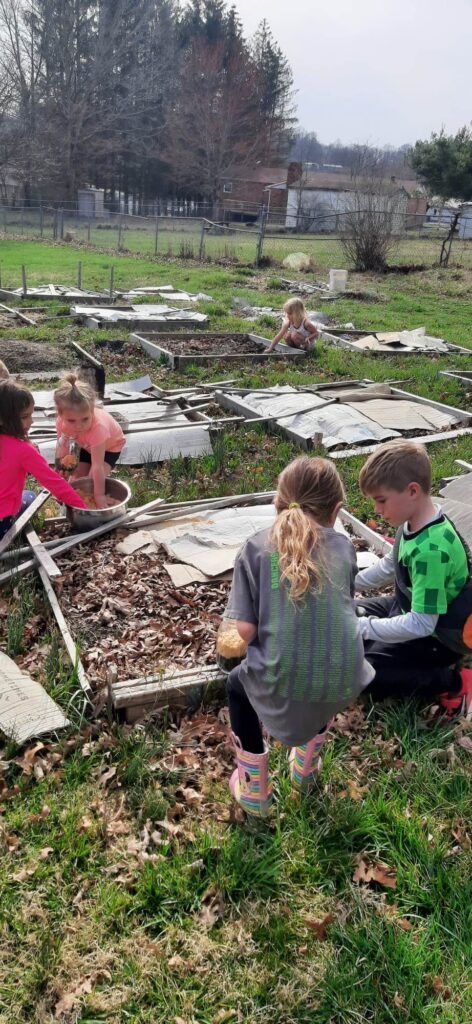
This category covers what would traditionally be dubbed as social studies and science. It is such a rich area of study that is technically under language in Montessori Primary (3-6).It has its own section since it is such a huge category. Cultural studies includes art, dance, music, geography, history, zoology, botany, peace studies, Bible, and Spanish. We began science experiments and truly enjoyed learning. We study SO much that I am not sure I can do it justice in just a paragraph. We do nature studies at Forest School, seasonal studies, units, Bible studies, geography studies, and more! Here’s a little look at some of the highlights (photos below) and you can also look at this in more detail under our seasonal recaps (linked at the beginning and end of this post.)
Helpful Links:
- Season Recaps 2022/2023: Summer, Fall, Winter, and Spring
- Year in Review 2021/2022
- Year in Review 2020/2021
- Montessori Homeschool Record Keeping (Tracker, Portfolios, and More – Free!)
- Our Main Albums (Basically Curriculum in Monti Language): Info Montessori (Free!), Montessori Album (also free!), Waseca Biomes, and The Timeline by Mainly Montessori
- Where to find printables frequently used in our homeschool: Stephanie Hathaway Designs, Green Urban Creative, Trillium Montessori, Modern Classical Homeschool, Montessori Inspired Company, Every Star is Different, Lisa Adele (Montessori Methods and Playful Path to Reading); Mega Bundles (I have a couple of these as well!)
- Planning for Montessori 3-6 Materials